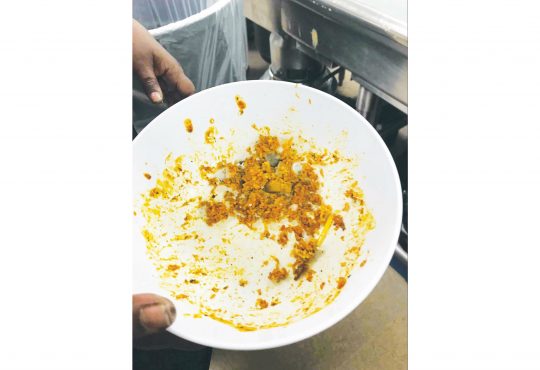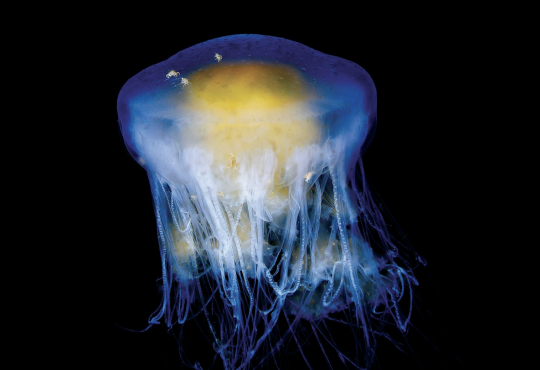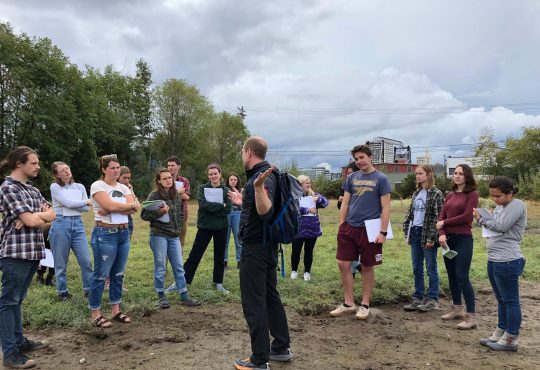Washington must learn from California drought: state must get serious about water conservation
by Michael Greenblatt
California is currently facing such an extreme drought that, for the first time in its history, mandatory water restrictions are in place. The problems afflicting California are nothing new, as most of California is desert and routinely struggles with low water supplies.
Now, though, the drought is the worst it’s ever been, and California is running out of water altogether. Official estimates of California’s remaining water supply foresee only one or two more years’ worth of water to sustain pre-conservation usage levels.
Even though here in Western Washington we are fortunate to have constant rain and lush forests, California’s extreme drought is not something we should ignore, and not just for the obvious reason that the state is suffering. California is one of the top agricultural producers in the world, and a significant amount of domestic produce in the United States comes from California. With the extreme drought, food will become more expensive and scarcer.
However, the most pressing reason why no one should ignore the drought in California is because it is a not-so-subtle reminder of what is to come in the near future—as populations increase, natural habitats shrink and climate change intensifies, steady water supplies will become exceedingly rarer. So-called “water wars” will spark interstate conflicts as communities seek the same water source.
Indeed, California has already been involved in several water wars. A major conflict is on the horizon as California, Arizona, Nevada, Utah and Colorado all compete for more access to the dwindling Colorado River. Without access to this water supply in the future, each of these states will have to significantly restructure their communities, economies and environments. Water may have to be trucked in and wells dug deeper, but, ultimately, some places could become uninhabitable.
No matter how controversial mandatory water conservation measures may be, the severity and future consequences of California’s drought necessitate urgent action.
Yet, as bad as the situation currently is in California, it could be altogether worse. For instance, right now in Taiwan water rations are in effect throughout the entire northern region of the country, with rotating outages cutting off water for two days each week. Weather patterns everywhere are changing so drastically that even Taiwan—which normally has dense forests—has had insufficient rainfall to sustain its water usage.
But we don’t have to look halfway around the world to find another community struggling with droughts. In fact, the problem hits closer to home here in Washington than many people think. Three regions of Washington are in declared droughts, one of them in the Olympic peninsula and another in the Cascades. These surrounding droughts have the potential to jeopardize our own water supplies in Tacoma, despite our steady rains and nearby rivers.
Even worse than our own droughts, though, is the fact that many people in countries such as Yemen, Sudan and Bolivia already have to endure extreme measures just to get drinking water today. The situation could get worse in many parts of the world as the global population continues to rise without a foreseeable endpoint. If many people are struggling to find water now, how bad will the situation be in 2050, when population projections exceed 9 billion people? What about in 2100, when the population is expected to be over 10 billion people?
Current societal trends forebode a challenging future, but we can still prevent the worst-case scenarios from happening. The unprecedented severity and patterns of droughts that are affecting several parts of the world at once, including the places where we live, go to school and get our food from, should serve as a lesson to everyone, not just those people who are directly suffering right now. Our excessive thirst for water will not subside unless we make sure that it does. Although our appliances and faucets may become more efficient, it is our behaviors and mentality that must change.
We can, and must, take additional steps today to conserve water, beyond the obvious tips to turn off the tap when shaving or brushing your teeth. It is often overlooked, but food production is actually the largest strain on our water supply.
This is especially true with meat. For example, it takes 1,800 gallons of water to grow just one pound of beef. Chicken is slightly better, using 468 gallons of water to grow one pound of meat, although pork also hogs the water, requiring 576 gallons of water to grow one pound of meat.
Meanwhile, plants use significantly less water to grow than meat: one pound of wheat uses 132 gallons of water, one pound of rice uses 449 gallons and one pound of corn uses only 108 gallons. The food you eat has a larger impact on your water usage than any other behavior, yet it’s also the most hidden consumer of water.
Many people believe that their individual conservation efforts won’t make a difference. This is a fallacy. Consider that if everyone at our school used just one gallon of water a week less for the entire school year, we would collectively save more than 90,000 gallons. That is the equivalent of providing drinking water to sustain 1,000 people for six months. Now imagine if everyone in Washington or the United States did the same thing, and we’d save millions, even billions, of gallons of water a year.
The extreme drought in California should remind all of us that water conservation is essential to maintaining our current way of life. Our behaviors are unsustainable, and without serious efforts to conserve water by everyone, our communities will look very different in the not-so-distant future.




